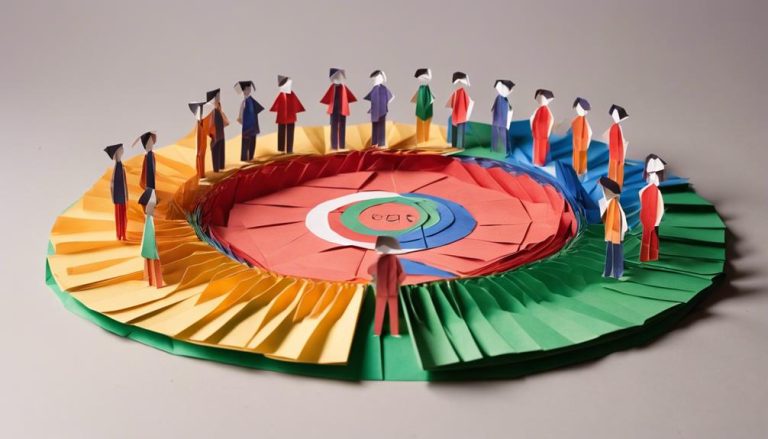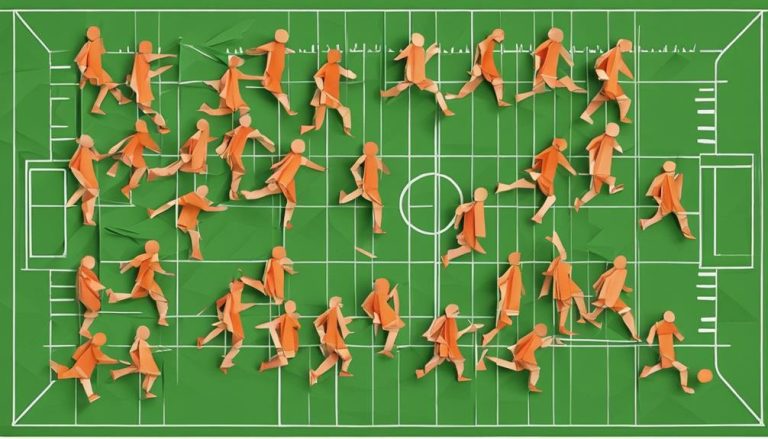General Rules of One Pocket Sport
Imagine a game of chess played on a pool table, each move strategically calculated to outmaneuver your opponent. In the world of one pocket sport, precision and foresight are key. Understanding the general rules sets the stage for a thrilling match where every shot counts. From the subtle nuances of legal shots to the importance of table etiquette, mastering these fundamentals can make all the difference in your gameplay.
Objective of the Game
When playing One Pocket, your primary objective is to score points by pocketing designated balls into your assigned pocket. This strategic game requires a balance of offensive and defensive maneuvers. As you step up to the table, your focus should be on strategic positioning, shot selection, and cue control to outmaneuver your opponent.
Strategic positioning is vital in One Pocket. You must carefully consider not only how to pocket your designated balls but also where to leave the cue ball for your next shot. By placing the cue ball in a favorable position, you set yourself up for success in subsequent turns. This involves thinking several steps ahead and anticipating your opponent's moves.
In addition to positioning, defensive moves play a significant role in One Pocket. Sometimes the best strategy is not to go for a difficult shot but rather to play defensively, leaving your opponent with a tough position. This can force them into making mistakes or playing a shot that benefits you in the long run.
When it comes to shot selection, you must weigh the risks and rewards of each potential move. Opting for safer shots that guarantee position for the next play can be more beneficial than attempting a risky shot that could cost you the game. Mastering cue control is essential for executing your chosen shots with precision and accuracy. By honing your skills in these areas, you can enhance your performance and increase your chances of victory in One Pocket.
Legal Shots and Fouls
Understanding what constitutes a legal shot and the consequences of fouls is essential in One Pocket to maintain fair play and strategic gameplay. In One Pocket, a legal shot involves striking the cue ball with the cue tip and hitting a legal object ball first. Legal techniques include banking a ball off the cushions, making contact with object balls in any order, and executing a combination shot. However, if you fail to hit a legal object ball first, it results in a foul.
Foul consequences in One Pocket can vary but often include giving your opponent ball in hand, where they can place the cue ball anywhere on the table for their next shot. Fouls can have a significant impact on the flow of the game and provide your opponent with an advantage, so avoiding them is vital for success in One Pocket.
To prevent fouls, make sure that you carefully plan your shots and aim to hit legal object balls first with your cue ball. Practice your positioning and shot selection to minimize the risk of fouls during gameplay. Understanding the rules around fouls and legal shots will not only help you avoid penalties but also elevate your strategic thinking and overall performance in One Pocket.
Pocketing Balls
To successfully play One Pocket, you must focus on skillfully pocketing balls strategically throughout the game. In One Pocket, pocketing balls is not just about sinking them into any pocket; it's about using the cue ball and planning your shots with precision and strategy. Here are some key points to keep in mind when pocketing balls in One Pocket:
- Positioning is Key: Always think ahead and consider where you want the cue ball to end up after pocketing a ball. Positioning the cue ball strategically can set you up for your next shot and prevent your opponent from having easy opportunities.
- Protect Your Pocket: Be mindful of which balls you pocket and where the cue ball ends up. You want to pocket balls while also protecting your pocket and limiting your opponent's chances to score.
- Use the Rails: Utilize the cushion rails to your advantage. Bouncing the cue ball off the rails can help you get better position for your next shot or make it harder for your opponent to pocket balls.
- Plan Ahead: Always have a plan in mind. Think about the sequence of shots you want to take to clear the table while also maintaining control over the cue ball and the game.
- Stay Calm and Focused: Pocketing balls in One Pocket requires concentration and composure. Stay calm, focus on your strategy, and execute each shot with precision to outmaneuver your opponent.
Scoring System
Curious about how scoring works in One Pocket? Understanding the scoring system in One Pocket is crucial to mastering the game. In this game, each legally pocketed ball earns a player one point. The ultimate goal is to pocket eight balls in your designated pocket before your opponent does the same. However, it's not just about pocketing balls; strategy is key.
Scoring strategy in One Pocket involves a mix of offensive and defensive play. Players must not only focus on pocketing balls but also on placing the cue ball strategically to limit their opponent's options. Understanding handicaps is also essential in One Pocket. Handicaps are used to even out skill levels in matches, ensuring fair play and competitive games.
When it comes to tournament rules, scoring remains consistent with the standard one-point-per-pocketed-ball system. Tournaments often have specific rules regarding fouls, breaks, and other aspects that players must adhere to. Being familiar with these rules is crucial for success in competitive play.
Table Etiquette and Sportsmanship
As you engage in a game of One Pocket, observing proper table etiquette and demonstrating sportsmanship is fundamental for fostering a respectful and enjoyable playing environment. When it comes to table etiquette and sportsmanship in One Pocket, here are some key points to keep in mind:
- Respectful Behavior: Treat your opponent, the spectators, and the game itself with respect. Avoid using offensive language or gestures during the game.
- Fair Play: Play the game fairly without trying to deceive your opponent or gain an important advantage. Honesty is vital in maintaining the integrity of the game.
- Acknowledging Good Shots: Appreciate and acknowledge good shots made by your opponent. A simple nod or a compliment can go a long way in promoting a positive atmosphere.
- Maintaining Focus: Stay focused on the game and avoid distracting behaviors such as excessive talking or unnecessary movements while your opponent is at the table.
- Accepting Outcomes Gracefully: Whether you win or lose, accept the outcomes of the game gracefully. Congratulate your opponent on a well-played match and be gracious in victory or defeat.
Frequently Asked Questions
What Are Some Common Strategies Players Use in One Pocket to Gain an Advantage Over Their Opponent?
When playing one pocket, like a cunning fox hunting its prey, you must master shot selection and positioning to outwit your opponent. Utilize mind games and bank shots strategically to gain the upper hand.
Are There Any Specific Rules or Guidelines Regarding the Positioning of the Cue Ball After a Shot in One Pocket?
After a shot in one pocket, where you place the cue ball matters. Strategic positioning can limit your opponent's shot selection and open up opportunities for your game. Understanding cue ball control is key to winning.
How Do Players Typically Approach Defensive Play in One Pocket, and What Are Some Key Principles to Keep in Mind?
When it comes to defensive strategies in one pocket, players often focus on mind games and shot selection. Key principles include mastering positioning techniques to control the game flow and outmaneuver opponents strategically.
Are There Any Recommended Drills or Exercises to Improve One's Skills and Proficiency in the Game of One Pocket?
To enhance your skills in one pocket, focus on drills like speed control exercises for precise shots. Work on pocketing balls efficiently and mastering positioning control for strategic advantage, which shapes your shot selection.
What Are Some Common Mistakes or Errors That Beginners Should Be Aware of When Learning to Play One Pocket?
Like a skilled artist with a brush, you must be deliberate in your strokes. Common errors for beginners in one pocket include improper positioning, neglecting defense, and failing to plan ahead. Proper techniques guarantee success.






